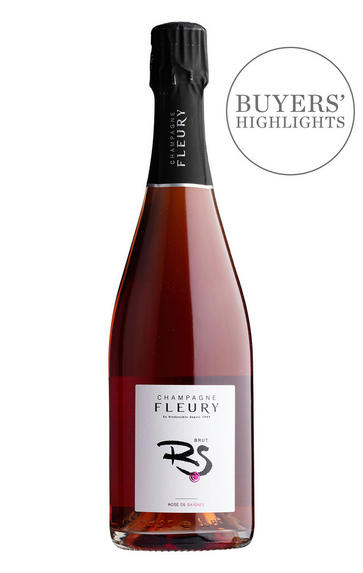
Champagne Fleury, Rosé de Saignée, Brut
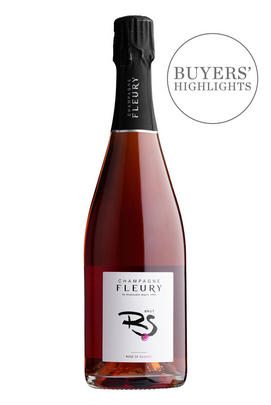
Critics reviews
Cherry-orange colored with aromas of blood orange, quince, raspberry, toasted nuts and herbs. Vinous and savory with subtle bubbles and a rounded finish. Very rich character. From biodynamically grown grapes. 100% pinot noir.
Drink now
James Suckling, janessuckling.com (October 2021)
This exuberant wine seems contradictory – it has a deep colour and a very vinous texture, yet it is drier and more elegant than one might expect. The texture is rich, but with only 2g/L of dosage, there is enough freshness to sustain the bright red fruit aromas edged with floral notes. The wine is made with 18-20 hours of maceration before being pressed off and finished without the skins. Although it is not noted on the bottle, all the grapes come from the 2018 vintage.
Drink 2023 - 2035
Charles Curtis MW, Decanter.com (April 2023)
Dosage is 3.4gr/L. Disgorged: May, 2022.
The NV Brut Rosé de Saignée is a pure Pinot Noir from the Aube, deeply pink and such a calling card for the house. This opens with creamy strawberry and mellow butteriness. The palate adds a lovely tart berry frisson to the undeniable generosity and roundness of the palate, think redcurrant and a touch of fragrant nettle. The dark color also brings with it a lovely phenolic streak that carries white pepper, a most gastronomic rosé with primary fruit and rounded brightness.
Drink 2023 - 2035
Anne Krebiehl MW, Vinous.com (November 2023)
About this WINE
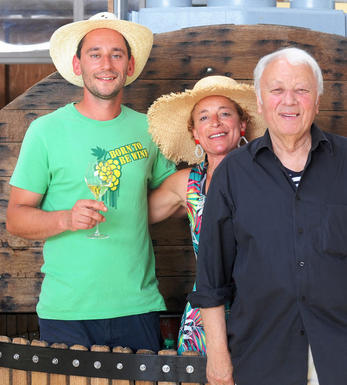
Champagne Fleury
Champagne Fleury has been in the business of winemaking for over 125 years and is respected as one of the region’s first pioneers of biodynamics. Despite its long history, Fleury has remained a family winery. It is located in the far south of Champagne, in the Côtes des Bar, where the terroir has a huge amount in common with the Grand Crus of Chablis.
Fleury has never stopped innovating. In 1989, they committed fully to organic and biodynamic practices, the first in the region to do so. The winery prides itself on personifying the “art of being natural”. In this spirit, Champagne Fleury isn’t afraid to go against the grain in the interest of coaxing the very best out of the terroir.
Perhaps due to this, Fleury cuvées have a distinctive vinous quality and display outstanding precision, thanks to the care taken by the team in growing them. The mature Champagnes are a conversation piece at any gathering, managing to balance an ethereal purity of fruit with an earthy sense of place.
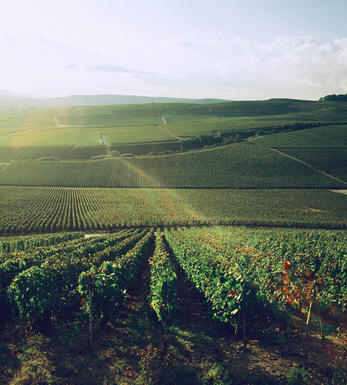
Rosé Champagne
Rosé wines are produced by leaving the juice of red grapes to macerate on their skins for a brief time to extract pigments (natural colourings). However, Rosé Champagne is notable in that it is produced by the addition of a small percentage of red wine – usually Pinot Noir from the village of Bouzy – during blending.
Recommended Producers : Billecart Salmon (Elizabeth Salmon Rose), Ruinart
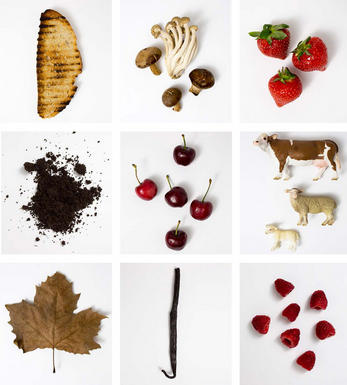
Pinot Noir
Pinot Noir is probably the most frustrating, and at times infuriating, wine grape in the world. However when it is successful, it can produce some of the most sublime wines known to man. This thin-skinned grape which grows in small, tight bunches performs well on well-drained, deepish limestone based subsoils as are found on Burgundy's Côte d'Or.
Pinot Noir is more susceptible than other varieties to over cropping - concentration and varietal character disappear rapidly if yields are excessive and yields as little as 25hl/ha are the norm for some climats of the Côte d`Or.
Because of the thinness of the skins, Pinot Noir wines are lighter in colour, body and tannins. However the best wines have grip, complexity and an intensity of fruit seldom found in wine from other grapes. Young Pinot Noir can smell almost sweet, redolent with freshly crushed raspberries, cherries and redcurrants. When mature, the best wines develop a sensuous, silky mouth feel with the fruit flavours deepening and gamey "sous-bois" nuances emerging.
The best examples are still found in Burgundy, although Pinot Noir`s key role in Champagne should not be forgotten. It is grown throughout the world with notable success in the Carneros and Russian River Valley districts of California, and the Martinborough and Central Otago regions of New Zealand.


Buying options
Add to wishlist
Description
The Fleury family were the first Champagne producer of the Côte des Bars, which started with vintage 1929. They later became the first biodynamic producer in the whole of Champagne. Pinot thrives in the chalk-clay soils of the region, giving a vinous character which can be attributed to their proximity to Burgundy.
This incredible Rosé is 100% old vine Pinot Noir, grown in the family’s vineyards near Couteron. After harvest, the juice is given a short maceration period on skins, similar to red winemaking.
The impact is extraordinary, giving a vivid pink berry, wild berry aromatics and favours of plum pie, red current-rhubarb crumble and a perfumed vinous character. The finish is dry but richer and more textured than many Champagnes. Firmly mineral.
Drink now to 2030
Davy Żyw, Wine Buyer, Berry Bros. & Rudd
wine at a glance
Delivery and quality guarantee